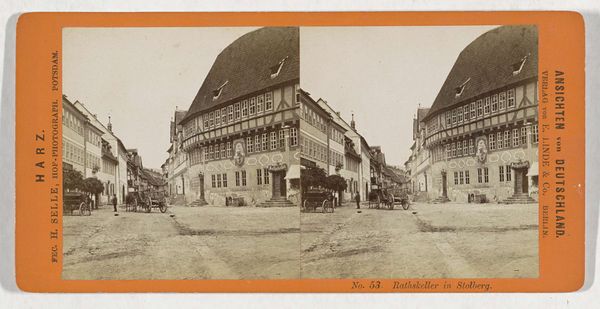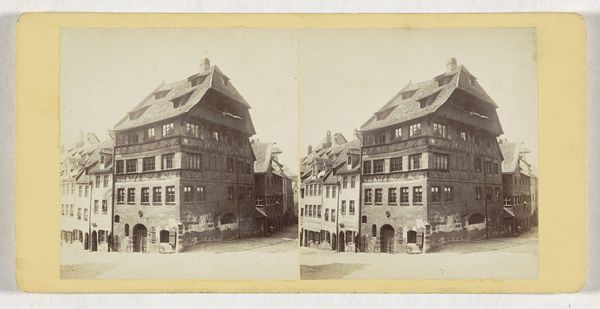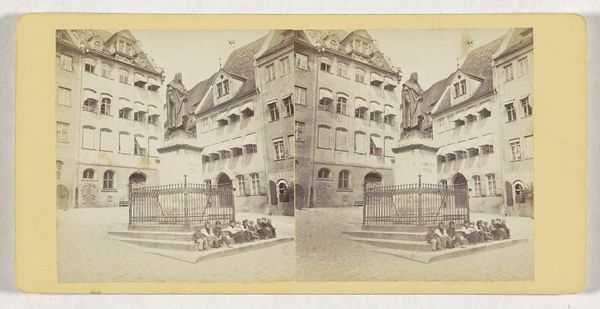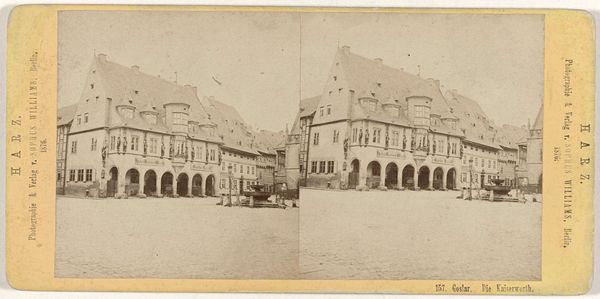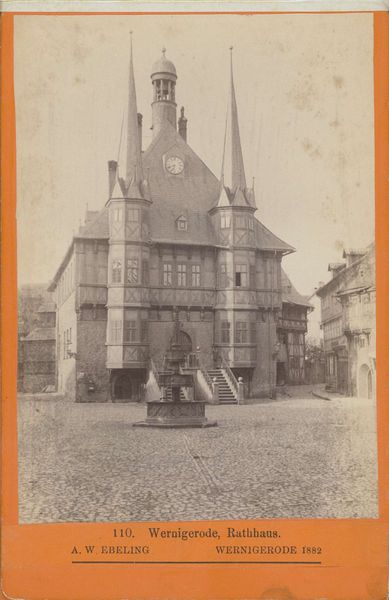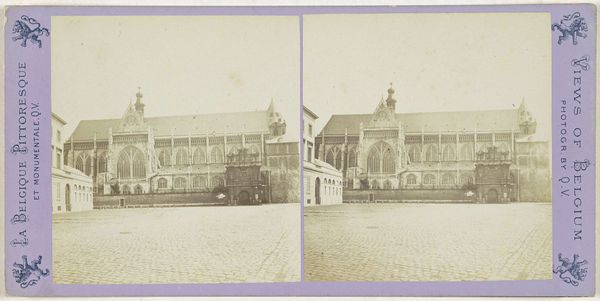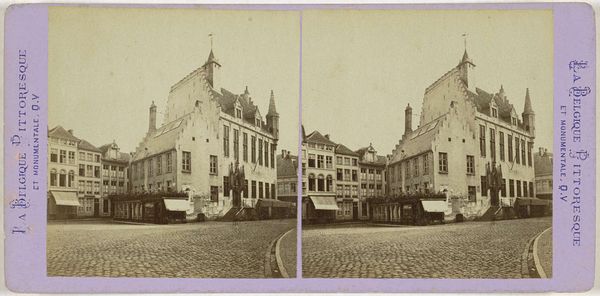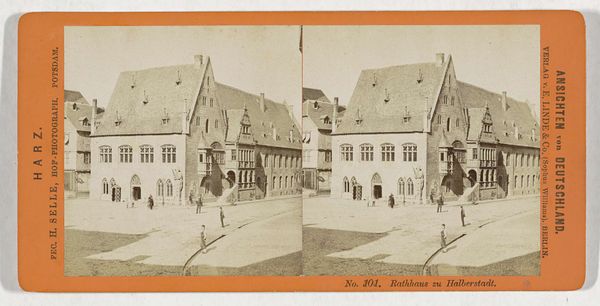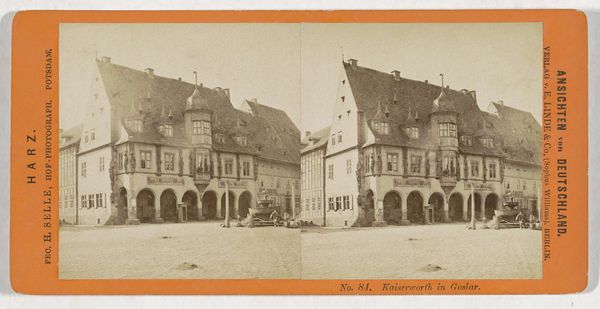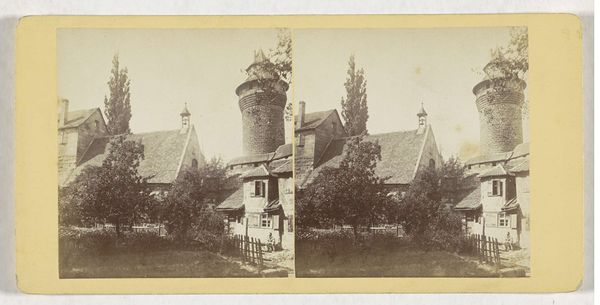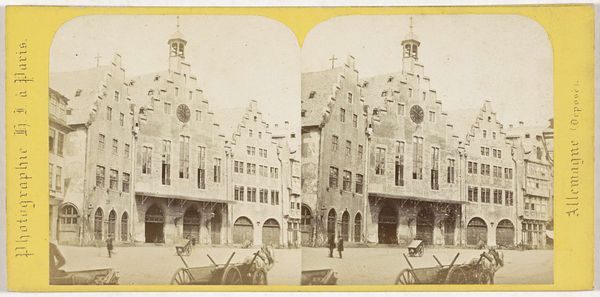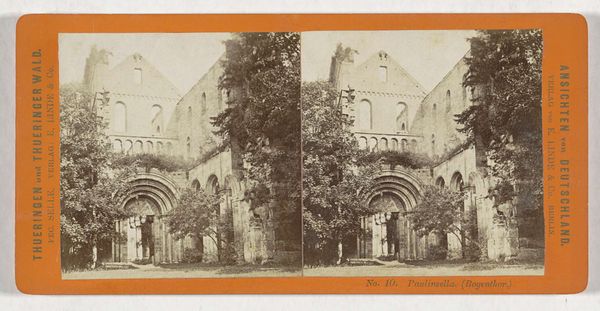
#
aged paper
#
toned paper
#
water colours
#
possibly oil pastel
#
oil painting
#
coffee painting
#
underpainting
#
watercolour bleed
#
watercolour illustration
#
watercolor
Dimensions: height 82 mm, width 169 mm
Copyright: Rijks Museum: Open Domain
This is a stereoscopic photograph of the Stadhuis van Wernigerode, made by Hermann Selle. Like many images made in this format, it was created by capturing two images simultaneously, lending a three-dimensional effect when viewed through a special device. The image-making process itself is fascinating. Light-sensitive emulsions, painstakingly prepared and applied to glass plates, captured the scene. The photographer would have needed a deep understanding of chemistry to undertake this kind of work. The final print is sepia-toned, a result of the chemical development process, lending the scene a warm, nostalgic feel. This aesthetic was highly fashionable, but also influenced by the relatively limited range of tones achievable with early photographic materials. It's interesting to think about photography as a skilled craft. Early photographers needed not only an artistic eye but also technical expertise, blurring the lines between art, science, and labor. Looking closely reminds us that all forms of image-making are rooted in material processes, skill, and social context.
Comments
No comments
Be the first to comment and join the conversation on the ultimate creative platform.
